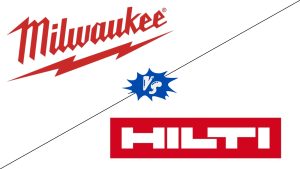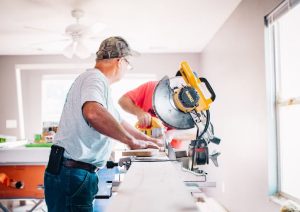We can’t deny that the arrival of various machines and advancements has made our lives damn easier.
Have you ever analyzed that we are running out of basic resources in the race of new advancements, devices, and gadgets?
We are now using technology and devices to have our hands on these natural resources fully. We are all trapped around technology and its growth even for our daily routine works.
(View Most Selling Pressure Well Pumps)
Water, the basic need of life, has become a demand due to the shortage of clean water. Many areas in the world face scarcity of clean water and are struggling daily to meet their requirements.
To overcome this, people went on a journey to find other ways of seeking water during their daily usage, including installing constant pressure well pumps.

The constant pressure pump is powered by an integrated variable speed motor that can accelerate or decelerate depending on water consumption.
If you need more water, the constant pressure pump will work faster, and if you use less water, it will work slower. Constant pressure well systems are more energy-efficient than older systems.
This factor means fewer fluctuations in perceived water pressure and fewer pump starts and stops, which reduces wear on well components.
After knowing the mechanism of what and how the constant pressure well pump is, you must first look at some of the worth considering models.
As investing in such pressure, a good pump that gives you too much or too little would not be an easy deal.
Agreed? Due to this reason, today in this guide, we will add every detail, pros, and cons of constant pressure well pumps.
About Constant Pressure Well Pumps
Constant pressure regulators employ cutting-edge technology to maintain constant water pressure via variable speed control of submersible well pumps.
Constant pressure pumps ensure that your home or business has consistent water pressure. A typical water system with a submersible pump and pressure tank provides 10-12 liters per minute to your home.
A constant pressure system necessitates that the submersible pump has a capacity greater than that of your home. This is typically greater than 15 liters per minute.
The price of a constant pressure pump Installing a constant pressure well pump costs between $2,000 and $5,000 on average.
When the water supply requires at least 1 GPM, and the tank capacity is limited to 20 gallons, a constant pressure system operates continuously.
A typical constant pressure system adjusts your good pump’s speed (RPM) based on the amount of water required.
When the pressure in the pressure vessel drops and filling is required, the pump starts in a standard well pump system.
Pros and Cons of Constant Pressure Well Pumps
Water pressure is a common complaint among Bergen County homeowners. It no denies that technology seems to have smiled upon us every day with its creativity and new comings.
But that doesn’t mean they are prone to disadvantages; just like everything has advantages and disadvantages, constant pressure well pumps meet the same criteria.

Living outside the city limits has several advantages, including a private and quiet environment.
Numerous drawbacks include a constantly running water pump, low water pressure, and high energy costs. Let’s briefly look at the advantages and disadvantages of constant pressure well pumps.
Advantages
One of the many benefits of a pressure pump is meeting your water needs.
The need for domestic water is endless. There is the dishwasher, the morning showers for school and work, and of course, the endless pile of laundry. Do not let a short pump ruin your morning, as the hot shower will be icy cold.
Consider installing a pump with constant water pressure to meet your household’s water needs.
Another benefit is that it maintains constant pressure. Knowing that your home’s water system can meet your constant water needs is reassuring.
Can your home’s water pump also maintain a strong, consistent pressure? When you wash your laundry, you may not notice a pressure drop, but when you shower after a long day at work, you will.
A constant pressure pump delivers the pressure that your home’s water system requires daily.
These constant pressure pumps have the potential to save both energy and money.
A constant pressure pump saves an unlimited amount of water and maintains constant pressure, saving energy and money.
This type of pump only uses energy when it is required. As the demand for water rises, so does the speed of the pump.
When the demand for waterfalls, so does the speed of the pump. That results in an energy-efficient and cost-effective well water system.
Constant pressure regulators / VFDs have an interesting advantage: electronic semiconductor devices. As a result, no electrical contacts or switches are open.
In the traditional system, pressure switches/relays are a major source of problems. Moisture or insects corrode electrical contacts.
VFD systems are not susceptible to these errors because they do not have this vulnerability.
Many customers in rural areas have poor current quality, even at low voltages.
Frequency converters and constant pressure regulators primarily take alternating current from the mains, convert it to high voltage direct current, and then convert it back to the pump’s required voltage/frequency.

In layman’s terms, this means that when you use a VFD, the costly pump will provide clean power deep down in your well, even if the installation provides poor quality power.
Remember that while VFDs can solve small power problems, you must work with your tool to solve large power problems.
Traditional pumps necessitate large pressure vessels or costly valves to prevent the pump from starting or running at full speed and then abruptly shutting down.
Quick start/stop generates too much heat in the motor, which can cause the pump motor to fail. Because water pressure and flow change quickly, this rapid cycling can damage pipes and other equipment.
Fast cycling with a VFD control unit is only memory because VFDs strategically increase or decrease pump speed to meet your needs.
Because you are unlikely to require all of the water that your submersible pump can generate, using a VFD controller means that your good pump does not run at full speed when you use water.
Lower speeds result in less wear and tear on the pump and motor. Less wear means a longer life for the pump and motor.
Constant pressure well pumps constantly monitor pressure and adjusts pump speed, and only a small pressure vessel is required as a buffer.
This eliminates the need for large pressure vessels, as well as the costs and space requirements that come with them.
Smaller wire diameters are appropriate when using a frequency converter to drive a three-phase pump motor than when operating an equivalent single-phase pump motor.
High-quality copper wire is expensive, and switching to a three-phase VFD-based system will save you money on wires.
In most industries, AC motors are simpler and more reliable than single-phase counterparts.
Disadvantages
Pressure well pumps must be installed by a technician who is familiar with pumps, electricity, and wells! Important information and settings must be provided to ensure proper operation and longevity.
In the case of submersible pumps, improper installation can result in premature pump failure.
Submersible drainage sump pumps should never be run at less than 30 Hz / half-speed because this can damage the engine’s hydrodynamic thrust bearings.
A technician is aware of the limitations of the motor/pump and VFD with which he is working and will handle the VFD accordingly.
One disadvantage of considering a VFD is whether or not you experience frequent power outages.
As previously stated, VFD / constant pressure systems do not necessitate the installation of large pressure vessels.
As a result, there is very little reserve water available when the power goes out.
If you suspect this is causing a problem, request that your installer install a larger pressure vessel. A VFD system’s repair and replacement costs can be significantly higher.
A pressure switch and control box failure on a standard two-hp pump system can cost $200 and $300.
Conclusion
We’ve mentioned above all the pros and cons of the constant pressure well pumps so that you can be aware of any of the consequences in the future.
We suggest that you first consult a technician if you desire to install a pressure pump. Without the help of an expert, you will not even be able to understand which model of pump you require for your use.
We hope you’ve found our guide effective and helpful in solving any of the confusion poking in your mind previously.



